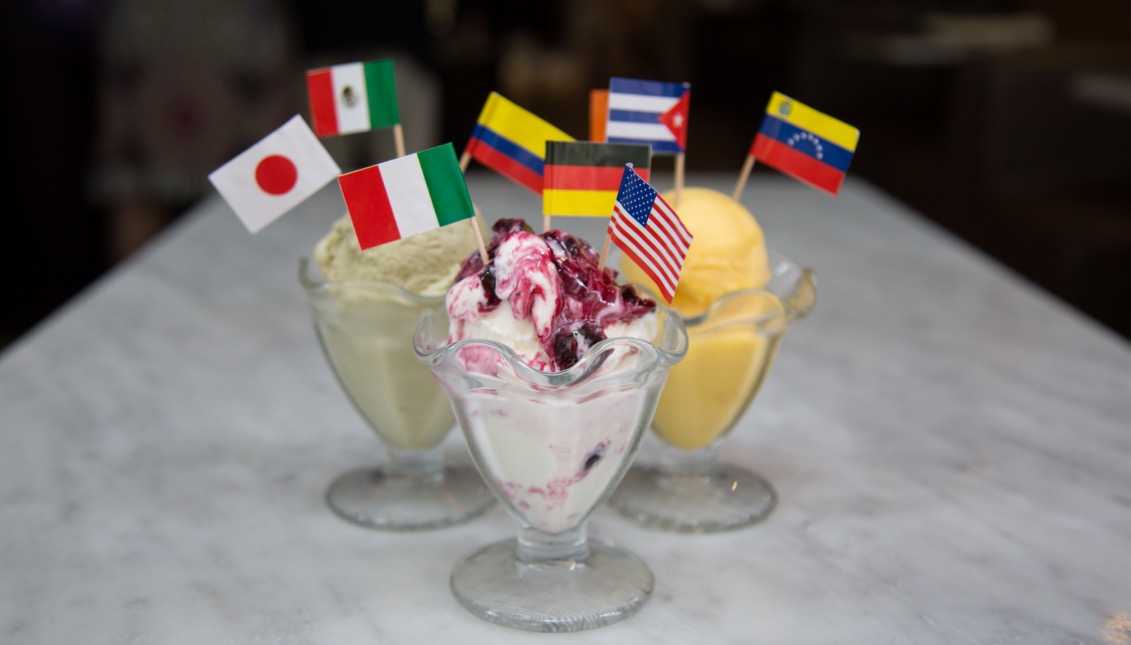
“Ice Cream”: The sweet flavors of immigration
Hot days always impose the need to cool down. But what happens when that need also becomes an opportunity to understand the cultural diversity of Philadelphia?
Creamy or watery, sweet and sour, refreshing or cloying, simple or baroque... The list is long. So long, in fact, that you can even say that there is one type of ice cream for every type of person. And, in Philadelphia, there are one million five hundred thousand people!
Precisely for this reason (and because in the summer, the king is the coldest of all desserts), the editorial team of AL DÍA came up with the idea to make a six-handed account of this delicacy- formerly reserved for the aristocracy -which today is the most popular delight, and constitutes another way to understand and to enjoy the contribution of the immigration to our city.
ChillyPhilly recalls that the refreshment tradition in Philadelphia came to be thanks to a wave of French immigrants, who fled the rebellion of slaves in San Domingo (now Haiti), in the late eighteenth century.
In 1843, the Philadelphian Nancy Johnson invented the manual refrigerator - a metal cylinder that, by means of a crank, turned the milk into a cold and creamy substance. Johnson's invention opened the doors to the democratization of frozen confectionery.
The effect was such that in the mid-nineteenth century the African American community also enjoyed the honeys of the business. Augustus Jackson, considered the father of ice cream, was perhaps the first African American in the city who made his fortune through the ice cream trade. But, if Jackson is considered the "father of ice cream", William A. Breyer and his son, Henry, are remembered as the pioneers of mobile ice cream made "Philadelphia style", whose recipe banished the yolk forever and limited to the mixture of cream, sugar and fresh fruits.
Thus, in a nutshell, Philadelphia shaped an industry reflective of its own society: a perfect blend of diversity, including women, Europeans, and African Americans, who forged the foundations of the frozen treat culture.
Today, Latino, Asian and Arab ice-creams are called to take the next step in the evolution of the industry: small and large businessmen who, through dialogue, tradition and experimentation, have enriched the menu: from a simple scoop of ice cream, passing by a canoe in North Philly to a palette of natural juice, the Philadelphian ice cream is increasingly rich and diverse like its people. This is another way to understand the role of immigration in the country's economy and culture.
***

In the summer, I can survive only on ice cream. Chocolate, hazelnut, coffee, vanilla, dulce de leche ... I don't mind spending a lot of time queuing in front of the counter of my favorite ice cream shop in Barcelona, waiting for every member of a family of tourists in sandals and shoulders burned by the sun to decide once and for all what they want.
In this respect, I am quite practical. I'm more a fan of creamy ice cream than fruity sorbets, so a chocolate or nougat ball is always my favorite. However, when it comes to deciding whether to take it in a glass or on top of a crusty cracker, I begin to have doubts: cup or cone?
This was the headline of one of the sections of The New York Time’s morning newsletter on July 31, which I receive every day in my e-mail. I began to read, and with joy I discovered, amidst bad news about Donald Trump, Russia, and North Korea, that the best-known soft ice cream company in the United States, Mister Softee, is originally from Philadelphia, my adoptive city. "Long live!” I shouted out loud, thinking that the next thing I will do when I return to Philadelphia will be to sip a Softee in Logan Square, one of my favorite places.
Brothers William and Hames Conway created Mister Softee in Philadelphia in 1956. The two worked for Sweeden Freezer, a large-scale manufacturer of ice cream machines, and decided to put themselves to develop a new technology that made a lighter ice cream at the same point of sale.
On Saint Patrick's Day, (March 17) that same year, Bill and Jim left for the first time with their truck to sell green ice cream in the neighborhoods of West Philadelphia. Two years later, in 1958, the company had grown so large that they had to move from downtown to larger facilities in Runnemede, NJ, where it is currently located. 60 years later, Mister Softee manages a fleet of more than 600-franchised ice cream trucks in 15 states and has a specific presence in the United Kingdom and China.
From New York to Seattle, Mister Softee ice cream trucks, painted in blue and white, are easy to recognize throughout the country.
The creamiest dreamiest soft ice cream
The maker of their famous jingle was Les Waas, a prominent Philadelphia publicist, who died in April last year at the age of 94. The son of a costume designer for the theater and a schoolteacher, Waas created his own advertising agency in the 1950s, without previous experience as a linguist or as a creative, according to the obituary published by The New York Times.
As a young man, Waas worked at a metallurgical company at the Navy shipyards in Philadelphia and later enlisted in area forces during World War II.
Among other advertising slogans, Waas created one for the Holiday Inn chain, the Phillies and other food companies in Philadelphia, such as Kissling Sauerkraut.
Neither softees nor ice cream trucks are popular in Spain. The most similar thing we have around here are the McDonald's Sundaes and, lately, the pretentiously healthy frozen yogurts.
However, everyone who was lucky to have been sent by their parents to study English in England or Ireland during summer time, have tasted the famous “99”, the popular vanilla softee in the United Kingdom.
The most common one -the “99 Flake”- always comes with a crunchy piece of chocolate flake created by Cadbury in 1930. If it has two flakes, then it is called the “Bunny’s Ears”. Drop some strawberry syrup on it, and it’ll become the “Monkey’s Blood” one.
Two months ago, after beating an Irish friend in a tennis match, he invited me to have an ice cream. He explained the “99 name” is due to its costs: 99 pence (around $1.20). I figured out later that was just another myth around this dessert. According to the Oxford English Dictionary, the origin of the “99 ice cream” comes from a tradition of using “99” as a way to refer to a fancy product, a whole luxury in allusion to an old Italian king’s elite guards, formed by 99 soldiers.
One more theory comes from Edinburg, where a family called Arcari claims their grandfather is the creator of the famous softee, all because he had its ice cream shop at 99 of Portobello High St. Supposedly, the grandpa already sold the ice cream back in 1922, when a commercial representative of Cadbury showed up to sell him the flakes and robbed his idea.
Cadbury’s website says the origin of the name “99” has been lost with time.
In the US, the dispute over who invented the softees machines first is still open. Dairy Queen and Carvel claim that honor.
Carvel began selling softees in 1934, completely by accident, because on Memorial Day in 1934 , he ice cream truck of its founder, Tom Carvel, was damaged, which forced him to sell semi-undone ice cream.
Dairy Queen, on the other hand, boasts that it put its own soft ice cream formula on sale in Kankakee, Ill., On August 4, 1938. The experiment was a success.
Whoever was the first one to do so, Mister Softee's ice cream remains the most popular. Their key to success? An advertising campaign of the 60s, the business model of franchises, and perhaps Margaret Thatcher's contribution to the recipe. According to British media, in 1940 the then-future British Prime Minister worked as a chemist at the multinational food company J.Lyons and Co, which at that time had an agreement with Mister Softee to distribute its new recipes of soft ice cream in American machinery.
The rumors say that Thatcher's participation, known for her conservative economic policy, consisted in adding more air to the recipe, allowing it to produce lesser-quality ice cream with more benefits.
***
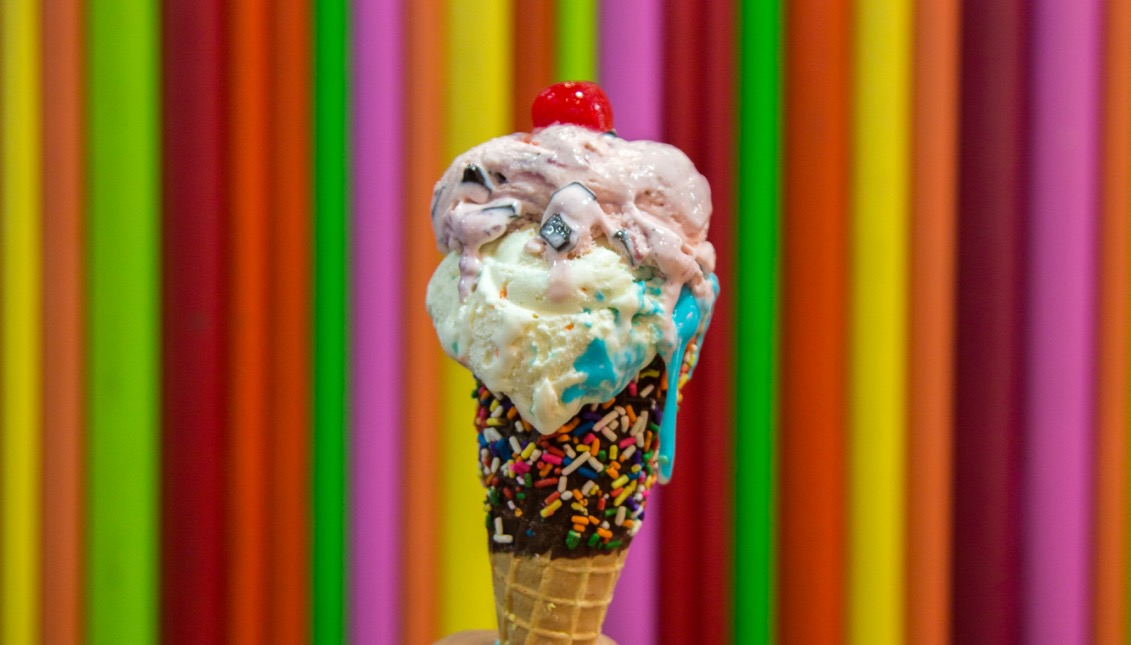
IIt’s no secret that Philadelphia is becoming a hub for “foodies” and culinary trendsetters, boasting restaurants galore that showcase various types of mouth-watering cuisine. A diverse population of talented chefs and restaurateurs, commandeering kitchens from the miniscule quarters of a humble halal food truck by Drexel’s campus to the lavish Israeli Zahav, has made most neighborhoods in the City replete with exquisite options for a boozy brunch, a special night out, or a quick cheap bite.
Dessert, the fifth course of a proper formal meal (and arguably the most important) is having its moment in Philadelphia, particularly in ethnic establishments that cater to immigrants longing for a staple that reminds them of home or to palate-adventurers looking to try something refreshingly “new”. In University City, students can have Taiwanese shaved ice at Winterfell Dessert or wait in line for the adorably kawaii and delicious macaroons sold at Sugar Philly (typically parked on 38th and Walnut). Chinatown provides bubble tea and Thai rolled ice cream at Teassert Bar, which is almost more exciting to watch as it is to eat, and Fried Malaysian ice cream at either Banana Leaf or Penang (pick your battered sugary poison). South Street’s Sansom Kabob House has none other than Afghani ice cream- sheer yakh -on their menu, while ‘Lil Pop Shop by Rittenhouse Square takes a colorfully gourmet and artisanal spin on a summertime classic.
Gran Caffe L’Aquila, a Italian newcomer in Center City, was once a landmark cafe at the foot of the Piazza Duomo. Tragedy struck the original location and literally crumbled it to the ground, but fate’s plans included a sweet surprise: “Gelato” champion Stefano Biasini, “Award-Winning Coffee Roaster” Michele Morelli, met local Riccardo Longo, e voilà, L’Aquila emerged from the ashes on Chestnut Street. Other than having scrumptious staples from Europe’s boot, the restaurant has a distinctive saccharine experience unlike any other in the City: a gastronomic gelato dinner tasting.

And still, after all the demographic and riveting changes that have transpired in Philadelphia’s ice cream history, one company has stood the test of time: Bassett’s Ice Cream, for six generations, has been serving the same creamy, 16% butter-fat vanilla bean scoops since the opening of Reading Terminal Market in 1892.

Because it all began with Lewis Dubois Bassett, Quaker school teacher and farmer, churning ice cream in his backyard in 1861, Bassetts is effectively America’s oldest ice cream company! Even President Obama couldn’t resist a cone when he visited Philadelphia in 2010.
Nevertheless, you may be asking, how does Bassetts keep up with the fray of innovation in the way Philadelphians consume the chilly treat? Other than introducing one-of-a-kind flavors like “Guatemalan Ripple” and “Pomegranate Blueberry Chunk” to their repertoire, Bassetts has now become a name-brand in China and, as of June 2017, in South Korea. And, because of this cultural exchange, Bassetts now includes “Matcha” ice cream at all of their shoppes across the globe.
***
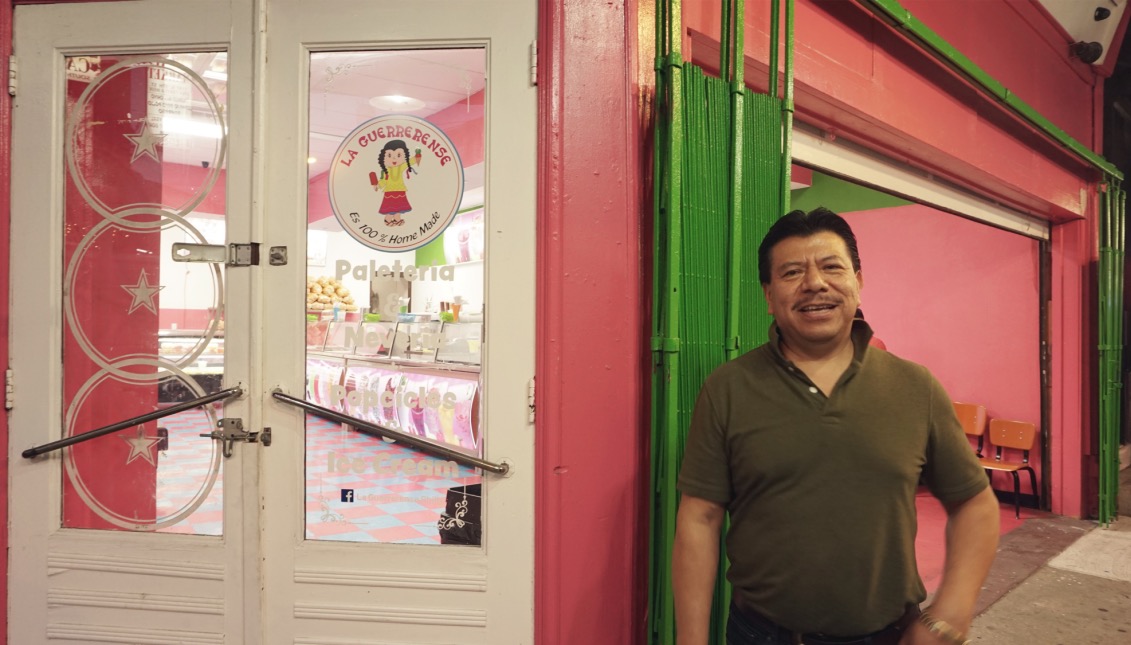
The corner of Ninth and Ellsworth has something special: two Mexican ice cream shops that, although located in the heart of the Italian Market, have little to do in appearance and taste with the Italian tradition of the gelateria.
One of them stands out. The bright colors of its walls and its wide open doors - in the middle of summer - attract even the most unprepared of passerbys. This is La Guerrerense, a place that after only three months since its opening, is already in the mouths of the inhabitants of South Philly.
But what is the secret for an ice cream store to become popular in such a short time? Surely, it is not the novelty of the store in the neighborhood. Before arriving, La Guerrerense was already a recognized brand in several wineries in the sector, all because since the opening of his parents company, ten years ago in Wilmington (DE), Gabriel Rojas and his family have been in charge of shaping a small empire Ice cream shop in 51 Hispanic stores and wineries in New Jersey, Pennsylvania, and Delaware.
The key, then, is taste and tradition. Although the production to maintain a presence of this magnitude must be gigantic (La Guerrerense offers 60 flavors of ice cream and 26 in pallets of pure fruit) its ice cream remains -as a sign claims at the entrance- “100% Homemade".
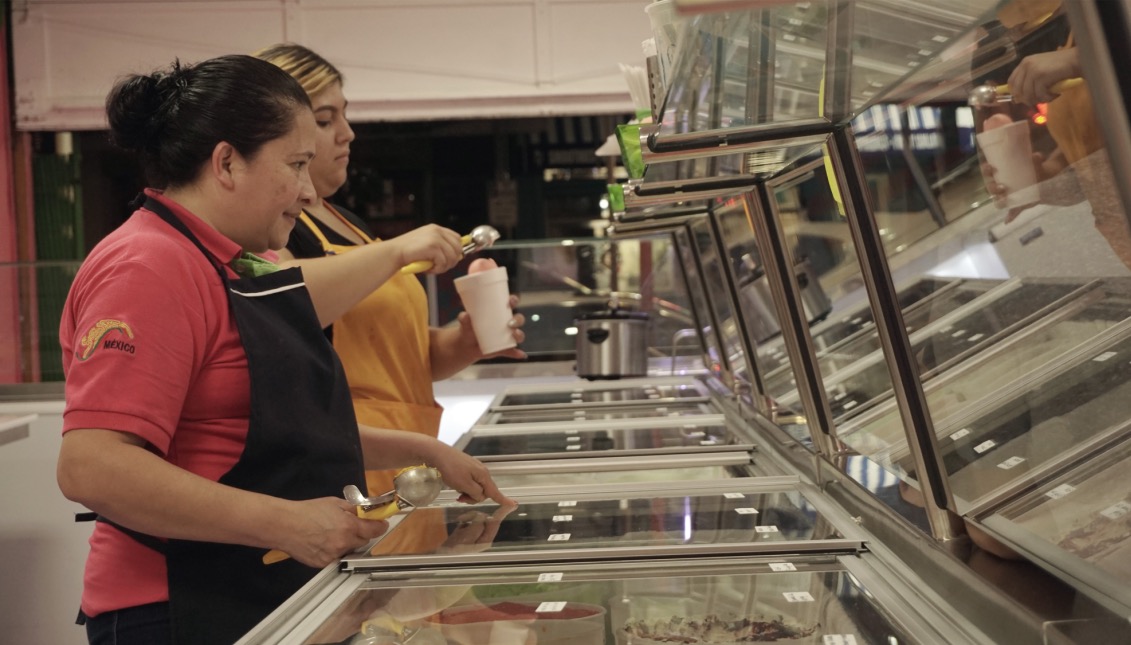
Its creation maximally preserves the artisan spirit of Don Gabriel, the father of the Rojas, who made ice cream in his native town, Iguala: a bottle full of ice and salt, a motorsito to help turn the blades, and another bottle to mix the milk and "the secret touch".
This is how the factory of La Guerrerense becomes every day, from the start of dawn, a workshop: angel kisses are made that way; one of its star ice cream and whose flavor cannot be described otherwise because there is simply nothing similar on earth. Pine nut, rompope, cheese, gansito, and tequila ice creams are also offered ... A variety beyond compare that, little by little, has conquered the palate of locals and strangers.
"We have American, Indian, Chinese, Puerto Rican, Mexican customers. All races eat this ice cream, because it is an ice cream made with love," says Rojas.
RELATED CONTENT
It is precisely love for what he does, and a born talent to create flavors, which have allowed him and his family to become one of the few Latin referents in the region's ice cream industry.
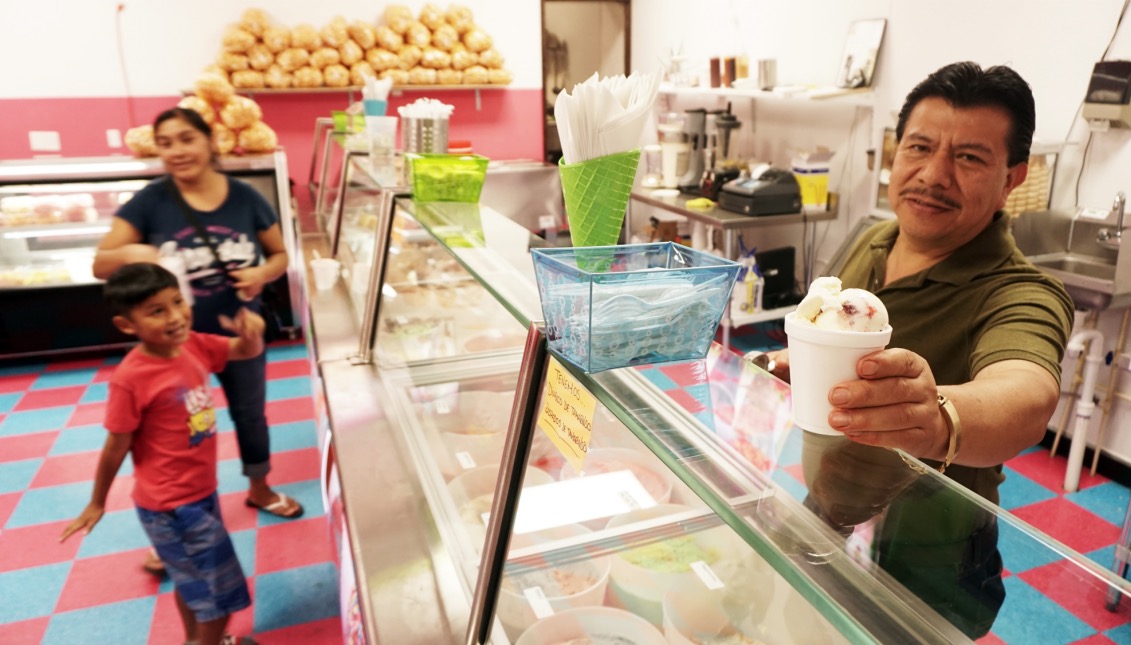
Rojas is a Mexican immigrant from Iguala, in Guerrero. When he tells his story he is responsible for making it clear why he defines himself as "a man with much luck".
In 1986 he crossed the border and although his first night in the United States could be the prologue of his life in the country- he had to sleep in the street because the place where he was going to stay was full -the truth is that it happened at the best time for the undocumented immigrants: Ronald Reagan's amnesty.
His experience is the antithesis of the Republican proposal to transform the issuance of residence cards into an "English Only" system. Without English proficiency and without a university degree, but with papers and an unwavering will, Rojas worked in everything he could: as a bracero, as a shirt-maker, as a welder in a bathroom furniture company, as a jeweler. In almost 15 years he put together enough money to start his own business.
Without being a cook, he opened a seafood restaurant. His brother Antonio, an experienced chef, took care of bringing it to the surface and bringing it to good use. Two years later, he repeated the formula: "La Guerrerense", without being an icebreaker, and with machinery and talent "made in Mexico", now runs a company that employs 12 people, which produces 35 bottles of two and a half gallons of ice cream and 4,800 pallets a day.
La Guerrerense is home to one of the best Latino ice cream in Philadelphia, and its history is the best metaphor of the immigrant experience in the country.
***

Chocolate and nuts, vanilla and strawberry, lemon and even mojito, the flavors of ice cream seem to be infinite. It is part of our popular culture, especially during the hot summer days, in almost every corner of the world. But what is the story of this delicious dessert?
The origin of "ice cream" dates back to 5th century BC, when the ancient Greeks mixed the snow with honey and fruit nectar, and sold it in the markets of Athens. Texts attributed to Hippocrates say that eating ice "fanned the juices of life and improved health."
In the year 400 BC, the Persians invented a "cold dish" that combined ice with rose water and noodles, and served royalty during the summer. Literature describes it as a "pudding" that was stored in refrigerator prototypes called yakhdan. These deposits managed to maintain the ice brought from the mountains during the summer, using wind receivers that kept the compartments at low temperatures.
Moreover, historical accounts tell how the king of Macedonia, Alexander the Great, and the Roman emperor Nero, "cooled their fruit juices and their wines with ice or snow brought from the mountains by their slaves."
Some years later, during the Shang dynasty in China, a mixture of milk and rice with ice was created, and was imported to India, Persia, Greece and Rome.
During the Middle Ages, some Arab courts also prepared sweet products with fruits and spices, which were cooled with ice from the mountains. The Arabs called it sharbat, which is the etymological origin of the word "sorbet".
But it is in Italy, during the late Middle Ages, where ice cream was introduced to the European culinary culture, by the sailor Marco Polo who, returning from his trips to the East during the thirteenth century, imported several recipes of "frozen desserts" which became the favorite dishes of the Italian courts.
When the Duchess Caterina de Medici married Henry II Duke of Orleans in 1533, she brought Italian cooks with her along with the recipes of ice creams, which would be transformed by adding eggs.
During the sixteenth century, the effect of ethyl nitrate on snow was discovered, and allowed the conservation of low temperatures. Thus, a granddaughter of Catherine, married to an English prince, took the ice cream recipe to England, which ended up spreading the cold dish throughout the European territory.
The first recipe in French for "flavored ice cream" appears in 1674, in the compendium of Nicolas Lemery entitled Recueil de curiosités rares et nouvelles de plus admirable effets de la nature ("Recount of new and rare curiosities of the most admirable effects of Nature), incorporated at the end of century to the texts of confectionery recipes.
In 1686, the Sicilian Francesco Procopio dei Coltelli opened Cafe Procope in Paris, a place where coffee and ice cream were served, which thereafter became an icon in the French capital (to the extent that King Louis XIV personally invited him to be congratulated for his product). The Procope Café was the first ice cream shop on record.
The first recipe in English appeared in England in the early eighteenth century in a book entitled Mrs. Mary Eales's Receipts, and appeared in the New World in a letter dated in 1744 from a guest of the Governor of Maryland, William Bladen. During the same year, the dessert is indexed in the Oxford Dictionary.
But it was the Quaker community that introduced ice cream to American society during the colonial era, eventually being distributed in stores throughout New York. Some records of merchant spending on Chatham Street show that President George Washington spent more than $200 on ice cream during the summer of 1790.
Also, presidents Thomas Jefferson and James Madison were responsible for transforming "ice cream" into one of their favorite dishes during feasts.
At the beginning of the 19th century, ice cream continued to be a product available only to elites, since its preparation and conservation required a lot of work.
But, with the invention of ice deposits in England by Agnes Marshall and its importation and adaptation of the system in America by Nancy Johnson, by 1840, ice cream production became a rapidly growing industry.
Technological development - mechanical refrigeration, homogenizer, engines and packaging equipment - allowed variations of ice cream, innovation in flavors and textures, and became a moral symbol for troops during World War II.
According to the International Dairy Foods Association, "each branch of the army tried to beat the others in the amount of ice cream served to their troops. When the war ended, and rationing of the product was lifted, the United States celebrated its victory with ice cream."
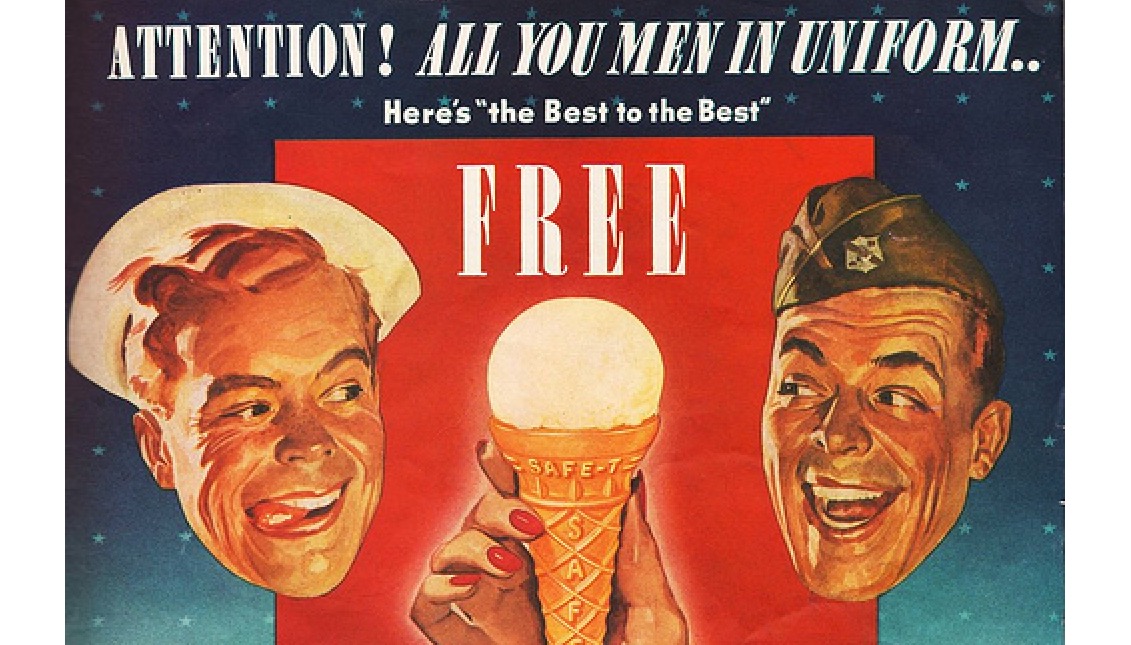
The evolution of ice cream during the late nineteenth century was fantastic. The creation of soft and creamy ice cream by Robert Green in 1874, contributed to the popularity of the product in the following century and with the emergence of the famous sundae. Since the 1970s, ice cream production has been relatively constant in the United States, producing annually up to 1.6 billion gallons.



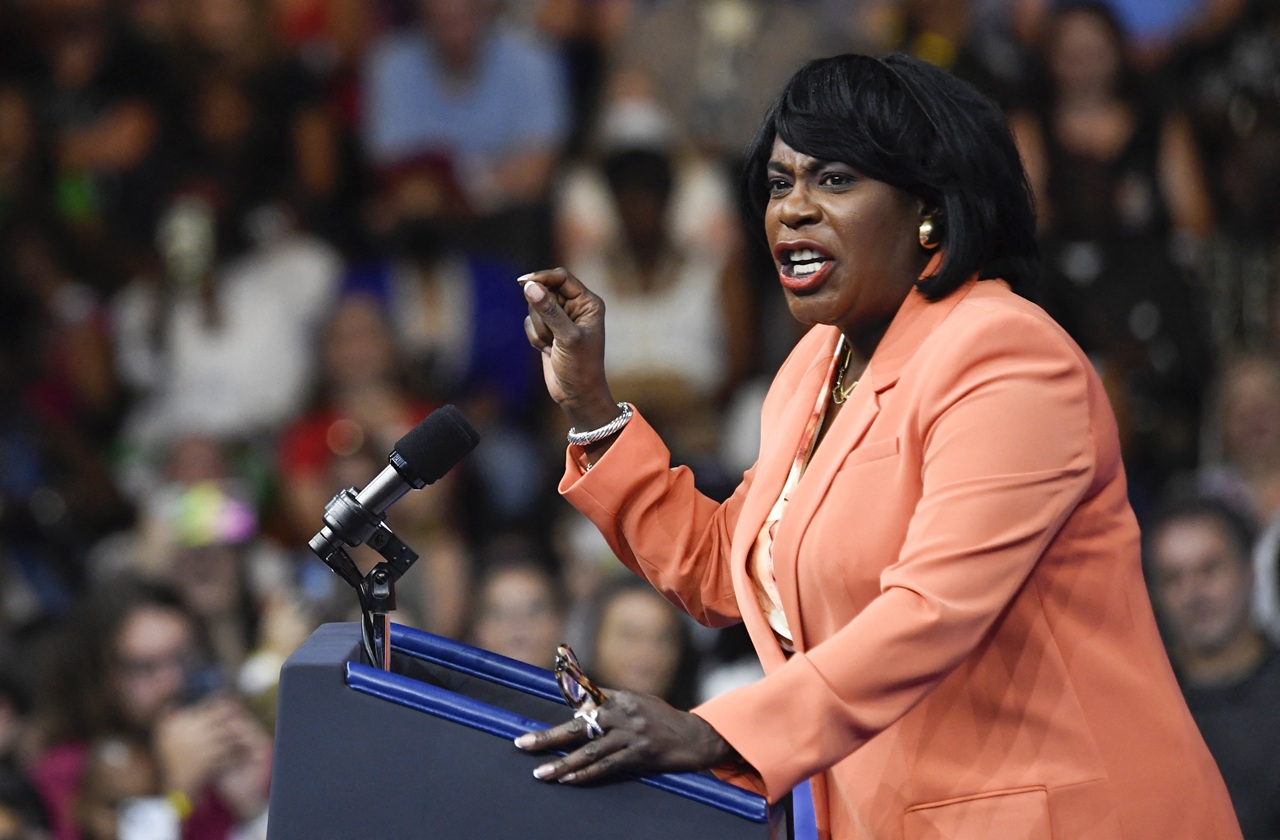






LEAVE A COMMENT: